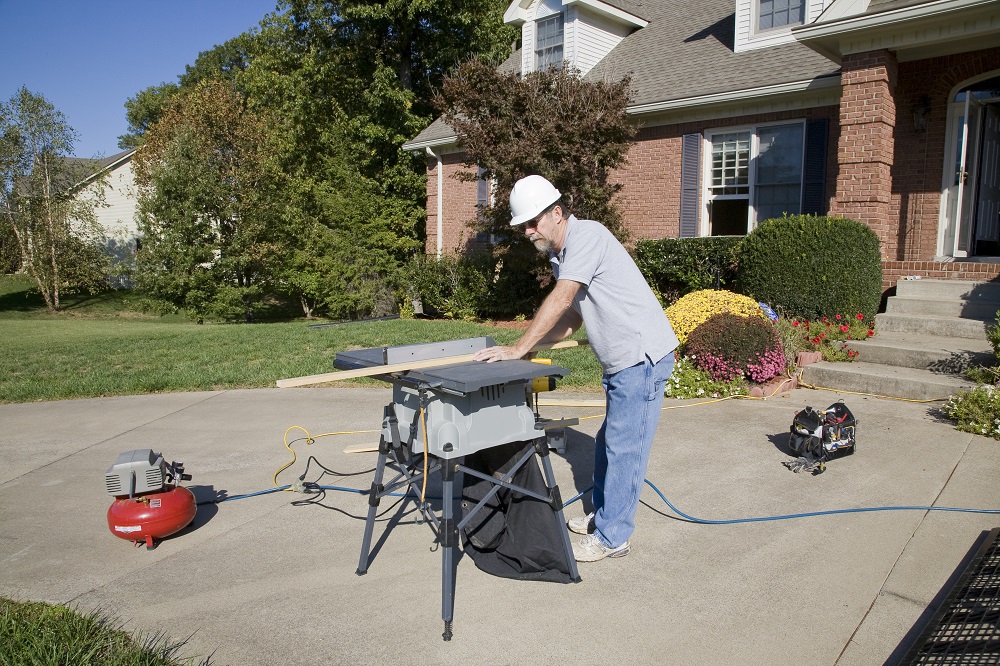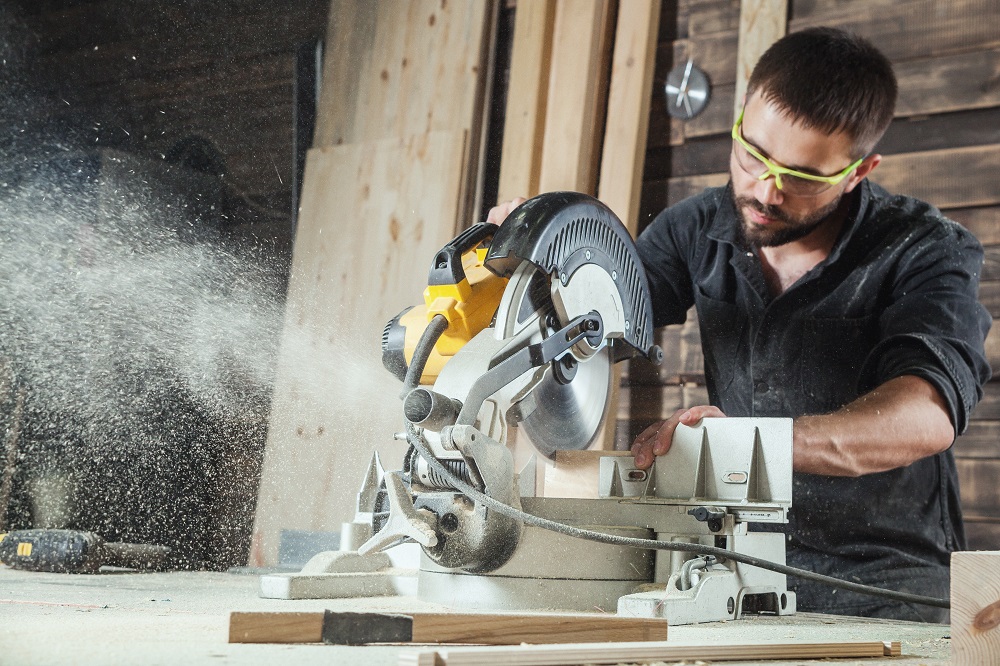The art of home building requires the finest of materials, most skilled professionals, and a high level of creativity and expertise in dedicated fields. To add, you also need to have quality tools and equipment for woodworking and other tasks you need to do. Woodworking, for example, is a process that requires an extensive array of tools and equipment you can use to create a variety of projects from raw materials.
Among these woodworking tools that are critical in completing a home building project are saws. A saw is a hand tool used to cut and transform wood and other home building materials. It typically consists of a blade with a hard toothed edge. Whether you’re a self-confessed do-it-yourself (DIY) enthusiast or a budding home builder, it’s highly recommended you invest in a good set of saws that you could use for your projects.
But before you go about filling your workroom with every type of saw you can find, there are several things you need to know first. From the benefits of custom saws to home building and woodworking tips, here’s some information that could help you out:
1. Custom Saws Can Make All The Difference
Beginners may find it practical to start with the basic saws needed for any cutting tasks. But, ask any skilled woodworker or seasoned contractor, and they’ll tell you the same thing—a suitable saw can make all the difference between well-defined notches and poorly cut chunks of wood.
Knowing how important a good saw is in every woodworking or home building project, you might want to give custom saws a try the next time you’re on the hunt for a new set of cutting tools.
A crosscut unit saw, for example, can be custom-made with several additional features so you can utilize it according to your needs. It’s ideal in a construction setting that requires heavy material staging for increased production. It even has an optional vacuum system that separately captures sawdust while operating.
Other additional features of custom crosscut unit saws are:
- Outboard end lubrication for extended durability
- Multiple frame length options
- Waste conveyor to separate sawdust and end trims
To add, you can enjoy more features and benefits depending on the type of custom crosscut unit saw that you choose. This type of saw is also ideal when working with softwood, hardwood, oriented strand board (OSB,) plywood, and medium-density fiberboard (MDF).
2. Finding The Right Custom Saw Manufacturer Is Key
When you already have a working knowledge of the kinds of custom saws you need, you’re ready to find the right manufacturer where you can purchase the equipment. But since it’s not every day that you go out there and look for this kind of manufacturer, the task could prove daunting and somewhat tricky too. You may or may not be able to get positive responses if you try asking for recommendations. Unless your circle consists of contractors, home builders, and construction company owners, finding a credible manufacturer of custom saws is an endeavor you need to tackle on your own.
A good starting point would be the internet. But of course, you can’t just pick any company from your search results. The key is to dig deeper and do a background check on the manufacturers you find online. Check their location, roster of products and services, how long they’ve been in the business, and reviews from their previous and present clients.
One manufacturer you can include in your prospects is https://ptmi.net/. The company offers an extensive range of custom saws that are designed for heavy use.
3. Professional Equipment Servicing Is Worth It
You may have invested in the right type and quality of saws for your home building business or DIY projects, but it doesn’t mean it ends there. The next step to take is to ensure your power tools and equipment are given proper care and maintenance so your investment will be worth every single cent.
Professional equipment servicing is highly recommended if you want to maintain the quality and level of performance that your custom saws are providing. It’s also better to contact your saw manufacturer because they know their products better than anyone, which means that they’re more than qualified to service and maintain the equipment you have. Keep in mind that attempting to do repair or maintenance on your own might do more harm than good, especially if you’re not at all well-versed in such a technical field.
With proper maintenance and servicing, your heavy-duty saws can run optimally and continuously, thus minimizing the need for repair or early replacement. This means less downtime and more profit for your business—particularly if you own a construction or home building company.
4. Aftermarket Parts Are A Cost-Efficient Solution
If you’re new to custom saws, you may not be familiar yet with aftermarket parts and their benefits to your home building business. The term is also commonly used in the auto parts industry, and yes, the concept is the same. When your custom saws require parts replacement, you can turn to aftermarket parts or parts that aren’t produced by the original manufacturer of the equipment but are highly suitable to serve the purpose.
This alternative is highly recommended in parts such as drive idler wheels, sprockets, saw chains, and saw bars that no longer work efficiently. Instead of replacing such parts with original and expensive ones, you can opt for aftermarket parts that are just as efficient but won’t hurt your cash flow.

Home Building And Beyond: Choosing The Right Saw Is No Easy Feat
No construction project will be completed without saws. You’ll need this power tool to cut the materials to the exact length or size that you need. It’s advisable to be armed with several types of saws that you can use according to their purposes. They may not fit easily inside the toolbox, but most can be hand-carried whenever you need to be on the move.
Choosing the right saw boils down to your needs and projects in mind. If you’re mainly building a toolbox for carpentry and woodworking projects, these are the types of saws you can include in your collection:
- Hand Saw: The most basic cutting tool; the hand saw is a must-have when cutting or trimming logs, boards, and other thin raw materials. It’s easy to use and inexpensive if you don’t plan to work on materials that require a power saw or something more heavy-duty.
- Jigsaw: A jigsaw is what you need when cutting out any material with a precise shape. Aside from being easy to operate, this saw is also power-operated and has multiple speed settings to help you get more accurate shapes and cuts.
- Circular Saw: Perhaps one of the most versatile saws you can find, the circular saw can be used in cutting almost any material you need to trim or crop. It’s highly recommended to use when splitting several plywood sheets at once.
- Coping Saw: If you’re working on a small project that involves only a little amount of sawing, the coping saw would be the ideal one to use. It’s a thin and small cutting tool with a flexible blade that allows you to trace tricky corners and clear-cut lines.
- Hacksaw: This is another handsaw that you can easily master. Hacksaws are often used through conduits, pipes, and thick plastic.
- Wet Saw: A wet saw may not be what you have in mind when shopping for saws, but this one might come in handy if you plan to work on big surfaces like the kitchen and bathroom. If you don’t think buying one is a good idea, you can rent it from a local home improvement center.
In commercial and construction settings, though, saws are more complicated and heavy-duty. Some of the most common types you’ll find are jigsaws, power saws, and table saws, but usually power operated and custom-made for better precision and higher production.
More Tips On Home Building
Aside from a good quality saw, you need other tools and equipment for a successful home-building project. You’ll also need to have supplies and tools for other essential processes such as assembling and finishing. Working with a general contractor for concrete projects could be of great help, mainly if your expertise is limited only to woodworking and other related skills.
Other devices and tools you might want to invest in include the following:
- Sawhorses
- Drills
- Hammers
- Measuring instruments such as tape measures and squares
- Mallets
- Concrete mixers
- Jack planes
- Ladders
The list can go on depending on the scale of the project you’re tackling. To add, protective gear and equipment should also be included in your checklist. Keep in mind that the safety and protection of you and your workers are of high importance and can’t be taken for granted.
Final Words
Whether it’s for a small DIY project at home or you’re expanding a home-building business, investing in good-quality tools and devices will always make a difference. Given the importance of cutting tools such as saws, it’s safe to say custom saws are definitely worth the investment.
Do your research well when finding a custom saw manufacturer. Consider hiring them as well when you need professional servicing, maintenance, and aftermarket parts for your equipment. That way, you’re rest assured knowing that your saws would be serving their optimal purpose in every way possible.






